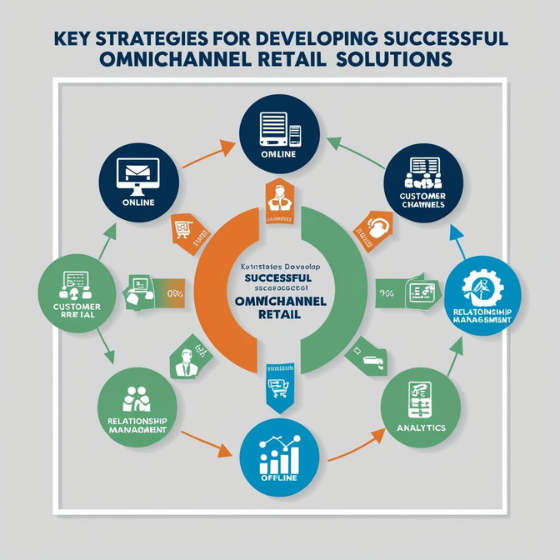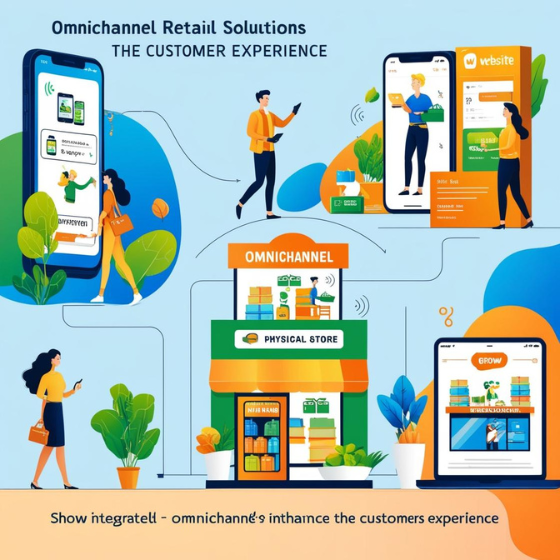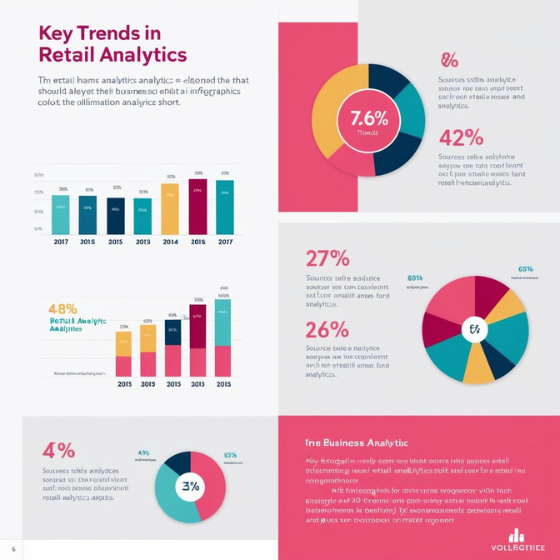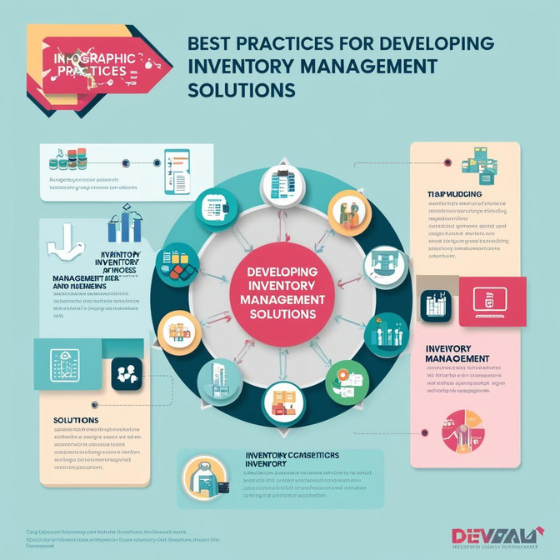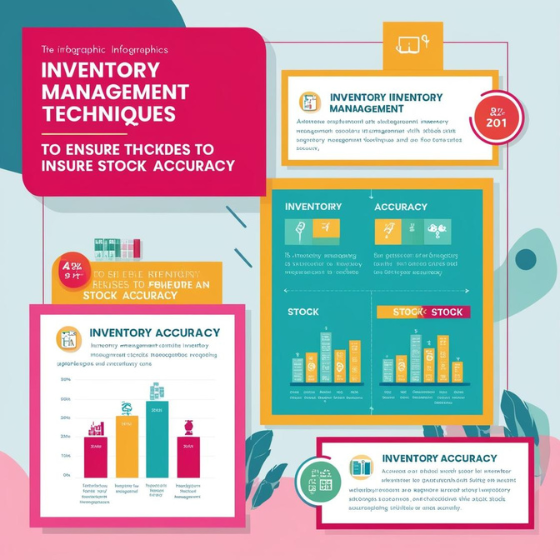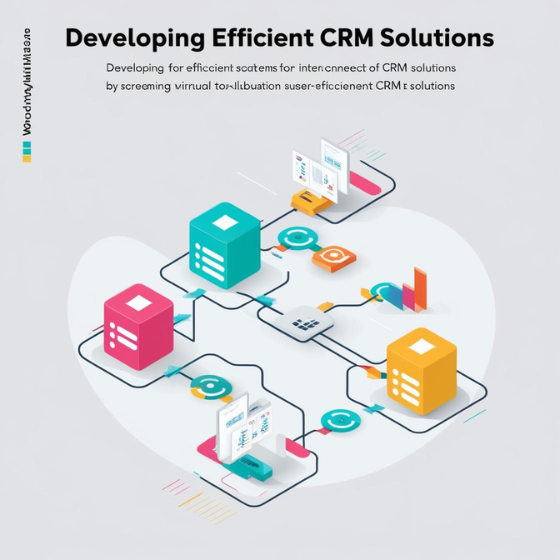Introduction
In today’s retail landscape, delivering a seamless customer experience across multiple channels is essential for success. Consumers now expect to interact with brands in-store, online, and through mobile apps with the same level of service and convenience. This is where developing successful omnichannel retail solutions becomes crucial. By integrating all customer touchpoints into one cohesive system, retailers can offer an exceptional and personalized experience that meets the evolving demands of their customers.
In this blog, we’ll explore the strategies and best practices for developing successful omnichannel retail solutions that enhance customer engagement, optimize inventory management, and drive business growth.
1. Understanding Omnichannel Retail
To begin, it’s important to define what omnichannel retail means. Unlike multichannel retail, where a business operates separate channels with little integration, omnichannel retail connects all sales platforms — including physical stores, e-commerce sites, mobile apps, and social media. This ensures that customers experience a seamless transition between each platform, resulting in a consistent and personalized experience.
Key Characteristics of Successful Omnichannel Solutions:
- Unified Customer Profiles: All customer interactions, whether online or offline, are tracked and stored in a single profile, allowing businesses to understand customer preferences better.
- Consistent Experience Across Channels: Whether a customer is browsing your website or shopping in-store, they should have a similar experience, including pricing, promotions, and product availability.
- Seamless Transaction Process: Customers can make purchases and check product availability across different channels without facing barriers or delays.
With omnichannel retail, businesses can meet customer expectations and stay ahead of the competition.
2. Prioritize Customer-Centric Strategies
At the heart of any successful omnichannel retail solution is a focus on customer experience. The goal is to deliver a seamless journey that enhances satisfaction, builds trust, and encourages repeat business. Prioritizing customer-centric strategies involves integrating various channels to make the shopping experience as convenient as possible.
Key Customer-Centric Strategies:
- Personalized Recommendations: Using data from all channels, retailers can offer tailored product suggestions based on a customer’s preferences, purchase history, and browsing behavior.
- Flexible Fulfillment Options: Give customers the choice to pick up products in-store, have them delivered, or even shop online and return items to a physical location.
- Omnichannel Loyalty Programs: Reward your customers for interacting with your brand across different touchpoints. For instance, points earned from online purchases can be redeemed in-store, and vice versa.
Focusing on these strategies can create a more personalized and frictionless experience that keeps customers coming back.
3. Integrate Technology and Data for Better Insights
The backbone of any successful omnichannel retail solution is technology integration. To create a unified experience, retailers need a robust system that connects data from every platform and touchpoint, providing real-time insights into customer behavior, inventory, and sales trends.
Key Technologies for Omnichannel Retail:
- Customer Relationship Management (CRM) Systems: CRM tools enable retailers to track customer interactions across all channels and offer personalized marketing, promotions, and communication.
- Point of Sale (POS) Systems: Modern POS systems allow retailers to manage transactions across both physical stores and online platforms, ensuring accurate inventory tracking.
- Enterprise Resource Planning (ERP) Software: ERP systems help manage and integrate core business processes, ensuring that inventory, orders, and shipping data are synchronized across all sales channels.
- Data Analytics: Data-driven insights from all channels help businesses optimize pricing, inventory, and marketing strategies. Predictive analytics can forecast trends and customer behavior, helping retailers plan ahead.
By integrating these technologies, businesses can streamline their operations, improve decision-making, and create a seamless shopping experience for customers.
4. Optimize Inventory and Supply Chain Management
Effective inventory management is a critical component of a successful omnichannel retail solution. Customers expect products to be available across all channels, whether they are shopping online or in-store. To meet these expectations, retailers need to ensure that their inventory is well-managed and accurately tracked across all touchpoints.
Best Practices for Inventory Management in Omnichannel Retail:
- Real-Time Inventory Tracking: Implement real-time inventory tracking systems to monitor stock levels across all sales channels. This minimizes the risk of stockouts and overstocking, improving the customer experience and reducing waste.
- Centralized Inventory System: Use a centralized inventory management system that integrates both online and offline sales. This ensures that products are available across all platforms and allows for more accurate forecasting.
- Flexible Fulfillment Options: Use your entire network of stores, warehouses, and fulfillment centers to fulfill customer orders. This flexibility allows you to deliver orders faster and more efficiently, enhancing customer satisfaction.
Optimizing inventory and supply chain management ensures that retailers can meet demand efficiently and offer customers the products they want, when they want them.
5. Measure and Continuously Improve Performance
To ensure that your omnichannel retail solutions remain successful, it’s important to regularly assess and measure their effectiveness. Retailers should continuously monitor customer feedback, sales data, and operational performance to identify areas for improvement.
Key Metrics to Track:
- Customer Satisfaction (CSAT) and Net Promoter Score (NPS): These metrics measure the overall satisfaction and loyalty of your customers, providing insight into their experience with your omnichannel strategy.
- Sales Conversion Rate: Track the number of visitors who make a purchase across all channels. This helps assess the effectiveness of your omnichannel strategy in converting interest into sales.
- Inventory Turnover: Measure how quickly your inventory sells through across all channels to identify which products are in demand and which are not.
- Customer Retention Rate: Monitor how many customers return to make additional purchases after their initial transaction.
Regularly tracking these metrics allows businesses to adjust strategies and make data-driven decisions that drive continuous improvement.
6. Overcome Challenges in Developing Omnichannel Solutions
While developing omnichannel retail solutions offers numerous benefits, retailers may encounter several challenges during implementation. Overcoming these challenges requires careful planning, investment, and ongoing support.
Common Challenges:
- Data Integration: Integrating data from various platforms can be complex, especially when using outdated systems. Investing in compatible software and platforms that can share data seamlessly is essential for success.
- Employee Training: Employees must be trained to use omnichannel tools and systems efficiently. Ensuring that staff is comfortable with new technologies can minimize errors and improve customer service.
- Consistent Branding and Messaging: Ensuring that your brand message remains consistent across all touchpoints is vital for maintaining a cohesive customer experience.
By addressing these challenges head-on, businesses can successfully implement and optimize omnichannel retail solutions.
Conclusion
Developing successful omnichannel retail solutions is essential for staying competitive in today’s retail market. By focusing on customer-centric strategies, leveraging technology, optimizing inventory management, and measuring performance, retailers can enhance the customer experience and drive growth.
At Sodio, we specialize in creating tailored omnichannel solutions that help businesses deliver exceptional, seamless experiences across all platforms. Ready to elevate your retail strategy? Contact us today and let’s work together to create an omnichannel solution that drives success for your business.
